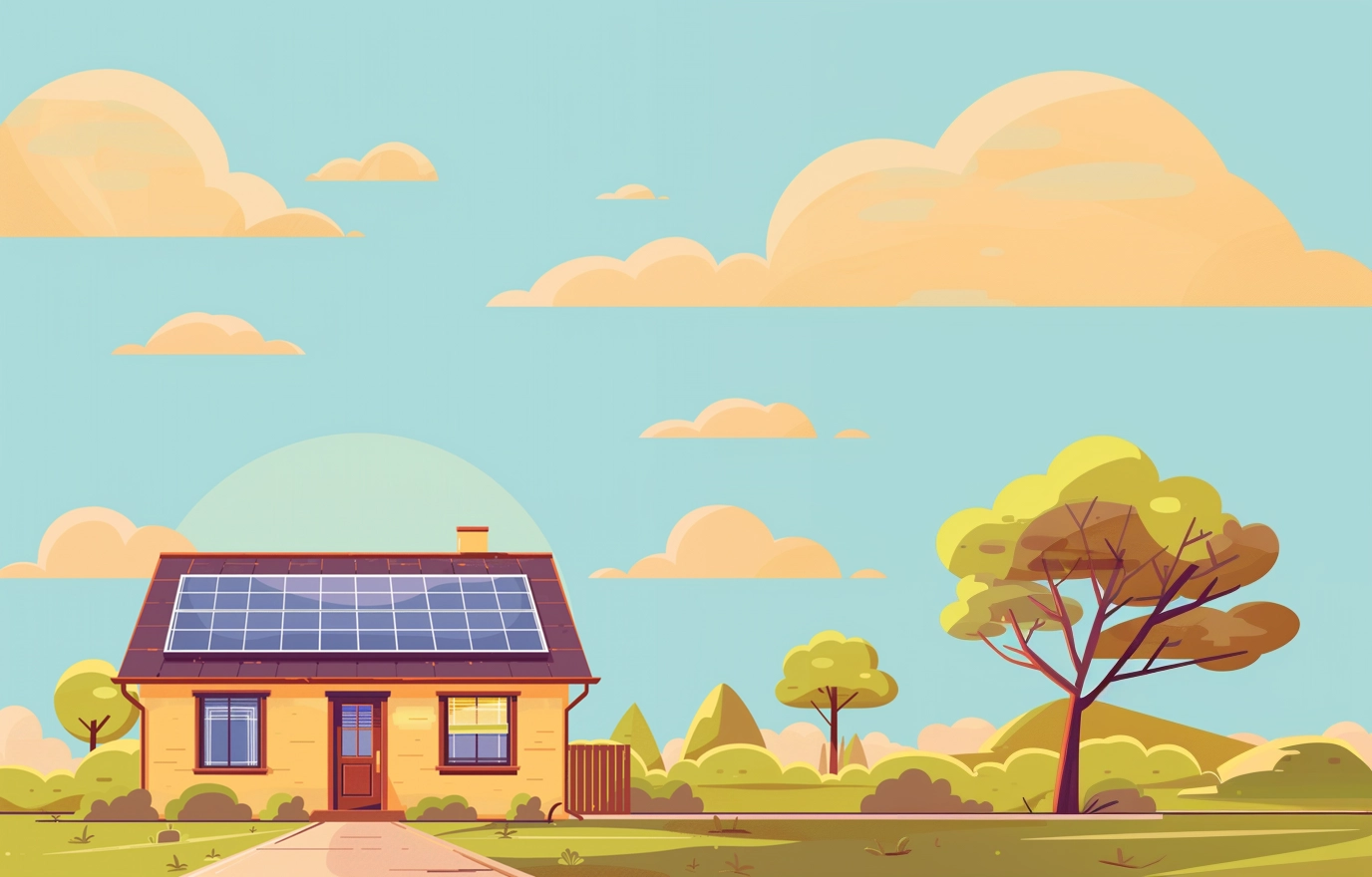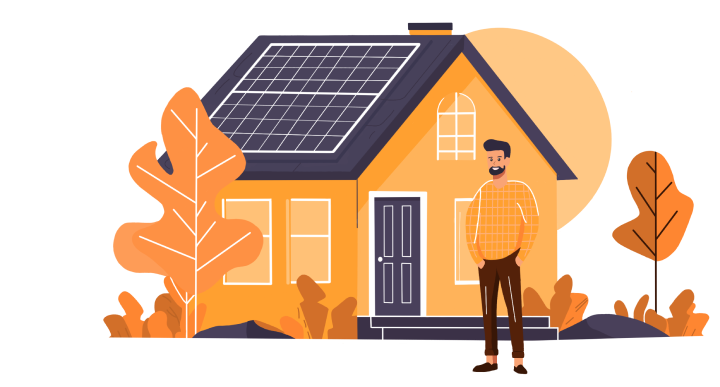Thinking of going solar but worried about the cost, process and whether it's the right move for your home? You're not alone. Many homeowners face these uncertainties when considering the big switch.
That's where Solar Energy Host comes in-your guide to everything solar. From explaining how to install solar panels to highlighting the significant savings and benefits, we're here to light the way.
This article serves as your step-by-step manual, ensuring you're well-informed and ready to make the transition to using a clean energy source. Ready to find out more? Read on.
An overview of the installation process
Each step on how to install solar panels determines the overall success of the process. By methodically following these installation steps, you're setting yourself up for a successful solar panel system that's safe, efficient and ready to power your home with clean alternative energy.
Step #1: Preparing the installation site
There's no need to ask, "How do solar panels work?" because you will learn the hows and whys once the setup is mounted, but only when it's done properly. Installing solar begins by conducting a thorough solar site assessment to pinpoint the best placement for your panels.
Step #2: Installing the racking system
The racking system is what your solar panels will call home. Your solar panel installer will either ask for your preference or decide based on which setup will offer the most advantages of solar panels, whether it is on the roof or the ground. It's crucial for the mounting system to be level and stable to ensure long-term performance of your solar panels.
Step #3: Panel placement and securement
Carefully place each panel on the mounting system, securing them with clamps, brackets and bolts. It's the job of solar panel installation companies to ensure the panels' orientation and tilt, which can significantly impact your system's efficiency.
Step #4: Setting up the electrical system
Setting up the electrical system for a local solar panel installation involves several key steps to ensure that everything runs smoothly and efficiently:
- Heat sink installation. While it's not technically required, a heat sink is good to have since it keeps your inverter cool and operational. Having this attached securely will help ensure the system will last a long time.
- Charge controller connection. This device connects to both your solar panels and battery bank. It regulates energy flow and prevents battery overcharging. Proper calibration is crucial for optimal performance.
- Battery bank setup. Position your battery bank in a spot that's both safe and easy to reach. This is your power reserve for cloudy days, so it needs to be connected and charged properly.
- Power inverter integration. This converts solar power into electricity for household use. Connecting it correctly to the battery bank maximizes energy harnessing.
- Energy meter installation. It tracks your system's energy production and consumption. Install it where it's easily accessible for monitoring.
- Final electrical connections. The last step involves making all the necessary electrical connections to bring your system to life. Carefully check each connection to prevent any electrical issues.
Post-installation checks and maintenance
Your responsibilities as a homeowner don't end after learning how to install solar panels or the typical solar panel installation cost. After your solar panels are up and running, it's crucial to ensure everything is in top shape.
Inspecting all electrical connections for security and tightness can prevent potential issues. Look out for signs of wear or damage that could impact your system's performance. Test the system to confirm everything is working as it should.
Connecting to the grid
Once everything is set, it's important to coordinate with your utility company to integrate your setup with the grid smoothly. This step ensures you're all set for energy export, with all paperwork and approvals cleared.
Routine maintenance and upkeep
Keeping your solar panels clean and free from debris plays a big part in maintaining their efficiency. Regular checks for any shading or damage can help in addressing performance issues before they escalate.
Monitoring your energy production allows you to spot any irregularities quickly. A little attention goes a long way in ensuring your solar panels continue to provide optimal output.
Making sure your system operates smoothly is key to reaping its full benefits. With Solar Energy Host by your side, it's easier to know what to do and when to do it. Our platform provides all the information you need, from the sources of affordable solar panels to how to install solar panels to proper care after the installation.
Frequently Asked Questions (FAQ)
What type of roof is best for solar panels?
Most roof types, such as asphalt shingles and metal, are suitable for solar power system installation. However, for the most optimal results, it's best that they also be structurally sound, have minimal obstructions, and have a slope between 15 and 40 degrees.
While materials like thatch or glass are less common and not ideal for solar energy installation, innovations in solar technology mean that there are mounting solutions for nearly every roof type. What's important is to understand your roof's specific needs and how they align with solar power installation requirements.
Are there any limitations on where I can install solar panels?
There are a few considerations to keep in mind when planning where to install solar panels. The size of your solar array is primarily determined by the available space on your roof. The roof's pitch, type and material can influence the installation process and potentially the solar panel cost.
For example, metal roofs offer a straightforward, cost-effective commercial solar installation process, while tiled roofs may require more complex mounting solutions. It's generally not recommended to install solar panels on wooden roofs due to their inability to support the weight and structure of solar setups over time.
How much maintenance do solar panels require?
This clean energy source, aside from being cost-efficient in the long run, is remarkably low-maintenance. The panels only need occasional cleaning and inspection to ensure they're operating at peak efficiency. Unlike other home improvements, the key to solar panel maintenance is prevention-keeping them clear of debris and monitoring system performance.
However, it's crucial to leave the installation process to professional solar power installers. By keeping an eye on your system and addressing any small issues as they happen, you can enjoy the benefits of solar power with minimal additional effort.
Unlock solar savings potential with Solar Energy Host
At Solar Energy Host, we understand that the decision to switch to solar and install solar panels can be intimidating, but we're here to make it as smooth and beneficial as possible.
With our innovative approach, we empower homeowners like you to calculate potential savings with solar panels through a free cost estimate. By entering basic information, you can receive competitive quotes directly, enabling you to compare and choose the offer tailored to your needs.
Join the countless homeowners who've found their solar solution with Solar Energy Host and unlock your savings with us. See how much it will cost to install solar panels in your home.



















